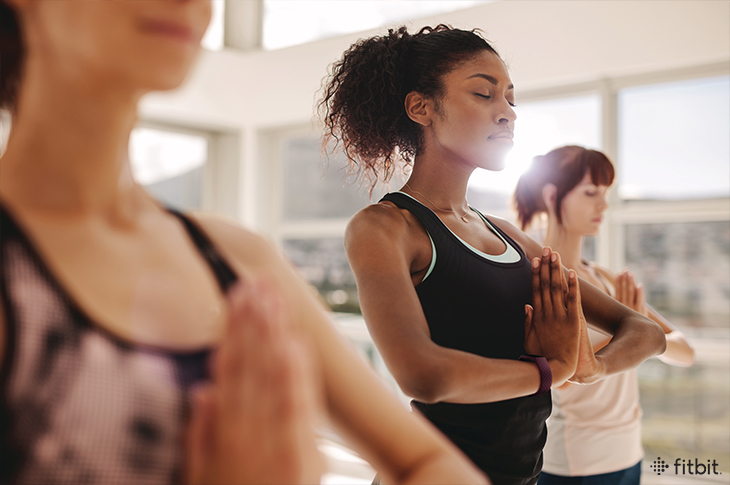
Although the root principles of self-care still ring true in the practice today, like everything else, it has evolved over time. The notion of improving one’s own well-being to live a more fulfilled life is nothing new, but the concept has come a long way since its origin. Of course, what people needed 50 or 200 years ago is different from what we need today—self-care reflects our environment, and everything from politics and scientific discoveries to economic health and more all play a role.
In 2020, life as we knew it came to a halt due to COVID-19 and through lockdown, working from home, racial injustice protests, and more, we were faced with stressors that we weren’t used to dealing with and had to discover new ways to care for ourselves in our new realities.
So, where does self-care stand today? Keep reading to learn more about the movement, the latest self-care practices, and where experts believe the practice is headed.
What exactly is self-care?
Self-care is when a person is proactively taking steps towards keeping their mind, body, and soul in a content and stress-free place. You can do this by taking breaks from work, doing meditation, exercise, journaling, or anything that helps you personally de-stress. But why do we do this? It’s simple—if we don’t properly take care of ourselves, we can’t take care of those around us.
“For me, self-care names the practices I do daily to help myself stay resourced, support my nervous system, immune system, and more,” says Jennifer Patterson, writer, sliding scale herbalist, and breathwork facilitator. “I’ve not always been one for a super strict routine but I do try to move my body, sweat, take my herbs, drink water, do some intentional breathwork, get a good night’s sleep, have way less screen time, and take time to slow down and be in my feelings a bit each day.”
The concept of self-care is nothing new, the idea dates back to the time of Aristotle, who believed in creating guidelines and boundaries for yourself in order to achieve your goals in life and ultimately find happiness from it. His philosophies were based on balance and generosity towards others, which is an essential part of self-care today.
“Taking care of ourselves so we are resourced enough to extend our care beyond ourselves is essential for personal and collective healing,” says Patterson. “We can only go so far focused on just ourselves—what do our friends and family need? What do our communities need? Sometimes these two avenues of care are out of balance—perhaps we have a history of taking care of others and not ourselves. Or maybe we haven’t yet found our roles in our communities. Either way, finding the balance became more necessary for many in the last year and a half.”
So, how has self-care evolved since 2020?
Although the treatments, activities, and mindsets of self-care have changed with the times, the outcome of feeling happier and healthier has always been the end goal. But let’s go back to when the now billion-dollar industry really took the world by storm when it hit mainstream in 2017. The term self-care was popping up all over the internet as a reminder and motivation tool to take care of ourselves during our busy day-to-day lives.
At the start of this modern self-care phase the idea of caring for our ourselves was there, but with the meditation, aromatherapy, face mask, and matcha tea fads, the wellness industry seemed to only cater to people who could afford the expensive hot yoga classes and who had accessibility to the trending treatments.
Then, enter 2020. Our environments were changing daily and in the face of uncertainty, self-care was something we turned to. However, this time it took on a new definition as mindfulness, downtime, and mental health came to the forefront for everyone. It became clear that self-care didn’t have to break the bank as connecting virtually with loved ones became a way to ease stress, instructors selflessly offered meditations or workouts for free, and resources became widely available online.
“I’ve been really heartened to see the excitement around accessing self-care and healing virtually,” says Patterson. “There’s a clear need for more support especially since so much of our day to day has shifted. So many healing arts practitioners and healing arts studios took their work online, which created a lot more access for people, especially people navigating disabilities, or rural people who maybe didn’t have as much access to a diversity of practitioners and modalities.”
What’s next for self-care?
Many of the self-care practices that we turned to while self-isolating at the beginning of the pandemic still remain great options today. Many have developed healthy self-care habits that they still have now, a year and a half later and will hopefully continue as we navigate our new realities post-2020.
“I hope that more healing arts practitioners continue offering more financially accessible work for the long run—offerings that are sliding scale or donation-based. We don’t just need it now, we’ve always needed it,” says Patterson. “I also hope that virtual work continues as that meets more access needs for people who maybe historically felt excluded from healing and self-care.”
The year 2020 brought on many challenges and hardships, but it also woke us up to our collective responsibility to each other. Through this new wave of self-care, we’re learning to take better care of ourselves, so we can take better care of each other.
This information is for educational purposes only and is not intended as a substitute for medical diagnosis or treatment. You should not use this information to diagnose or treat a health problem or condition. Always check with your doctor before changing your diet, altering your sleep habits, taking supplements, or starting a new fitness routine.

If you have questions about a Fitbit tracker, product availability, or the status of your order, contact our Support Team or search the Fitbit Community for answers.
Please note: Comments are moderated and may not appear immediately after submission.